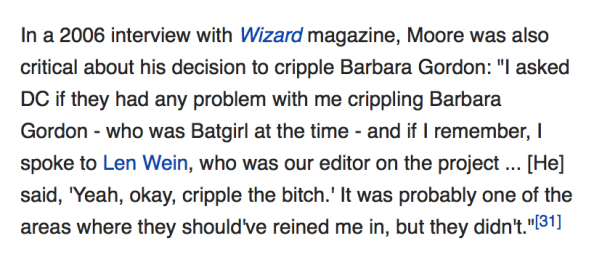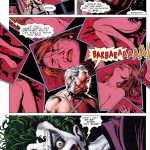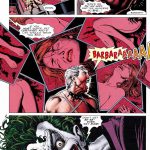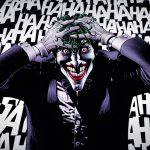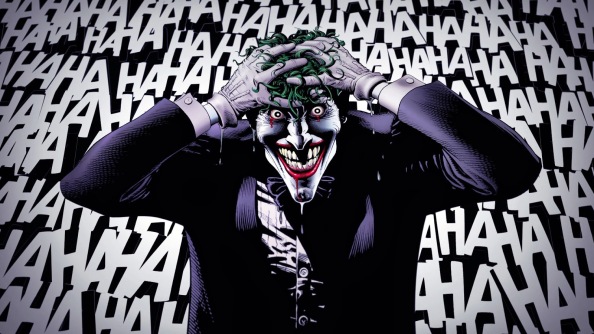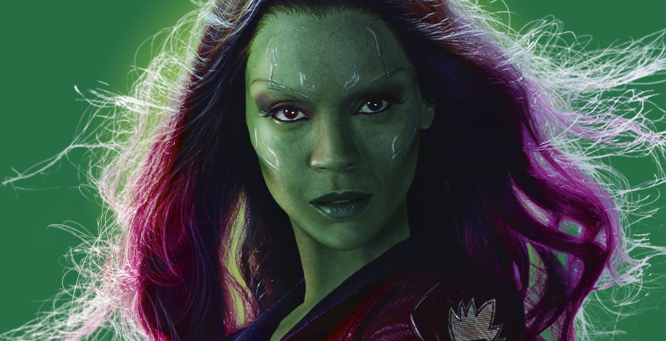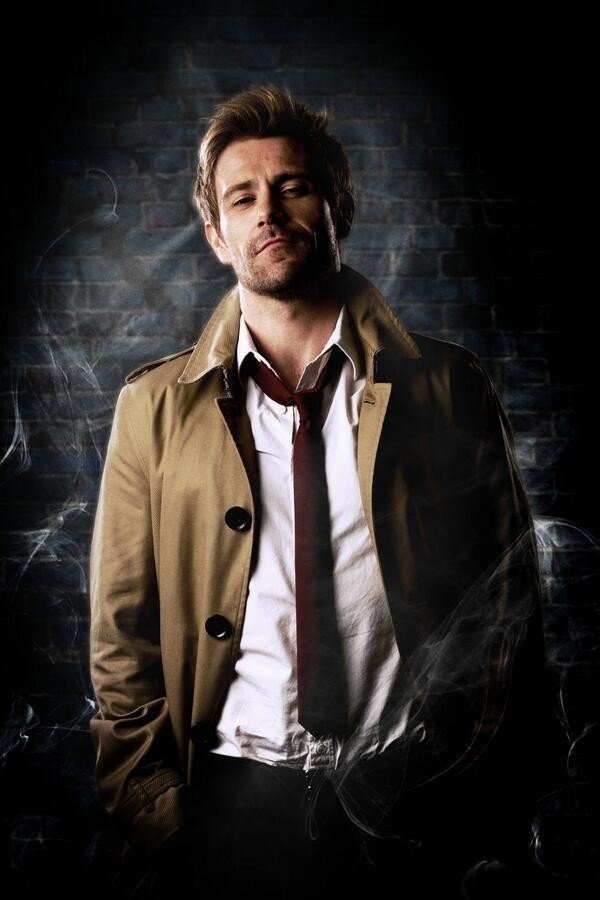First, I’ll start off this article by stating a simple fact: I saw Black Panther on opening night, and since then, I’ve wanted to write this post. I walked out of that film with so many ideas to talk about, I was nigh bursting. However, I waited this long to post anything about Black Panther for a simple reason – there are other voices than mine which should take precedent in a conversation about a film so strongly impacting people of color right now. There are so many writers of color putting out thoughtful, insightful articles about Black Panther that I felt it was important for me, as a white woman, to sit back and listen without stepping in and having my say.
Then, I saw this image pop up online asking why more white women weren’t speaking up about the feminism in Black Panther when so many are touting Wonder Woman as such a feminist film. So I figured it was time to write this then, to do my speaking up.
Because folks, I’m going to agree: Black Panther is a more feminist film than Wonder Woman. And I’m going to show you how.
[[Note: Major spoilers for Black Panther below.]]
 Feminism As An Integrated Force
Feminism As An Integrated Force
Previously, I’ve written extensively about the incredible job the creators of the recent Wonder Woman film did translate Themyscira and the Amazons onto film. Sure there were some issues along the way, but overall I believe director Patty Jenkins did a phenomenal job telling Diana’s story on the big screen. However, there has always been a part of the Wonder Woman story that rubbed me the wrong way.
As a little girl, when I saw misogyny growing up in the world around me, I longed for a place where I could escape, a society of women who were not only strong but intelligent, thoughtful, creative, and loving. Themyscira truly was Paradise Island, where a woman could be everything she ever imagined, without the influence of patriarchy on her growth.
Yet now, as a grown woman, I can see a fundamental flaw in this idea. Though the thought of a world without men is seductive when faced with the dangers of toxic masculinity on all society, I’ve come to believe removing one’s self from “man’s world” to only focus on a woman-based culture devoid of men is to ignore a larger part of society. Toxic masculinity, in fact, effects men in a “man’s world” just as bad as it does women, if only in other ways. I believe that to ignore those effects and abandon the rest of the world to its own devices is to truly ignore the promise of feminism’s positive impact on the world. By separating themselves away from men, the Amazon’s evolved into a utopian society to the detriment of the rest of the world. Their influence could have changed the world if only they’d emerged from their hiding sooner.
 By contrast, we have Wakanda. Though Wakanda is an isolationist society much like Themyscira in regards to the rest of the world (a subject for much debate elsewhere and addressed directly in the Black Panther film), it is also a well-balanced, nearly utopian society, growing technologically and societally with every passing generation while still holding onto its ancient traditions. Yet unlike other societies, Wakanda does not focus on patriarchal ideology, despite its male-dominated leadership (Wakanda has a history of only kings on the throne until, spoiler alert, Shuri becomes the first woman leader in the comics). Instead, Wakanda has fully integrated the idea of women as equals, creating a society where women are not only respected but accepted without surprise when in positions of power.
By contrast, we have Wakanda. Though Wakanda is an isolationist society much like Themyscira in regards to the rest of the world (a subject for much debate elsewhere and addressed directly in the Black Panther film), it is also a well-balanced, nearly utopian society, growing technologically and societally with every passing generation while still holding onto its ancient traditions. Yet unlike other societies, Wakanda does not focus on patriarchal ideology, despite its male-dominated leadership (Wakanda has a history of only kings on the throne until, spoiler alert, Shuri becomes the first woman leader in the comics). Instead, Wakanda has fully integrated the idea of women as equals, creating a society where women are not only respected but accepted without surprise when in positions of power.
 There are powerful examples of this integration all across the film. Shuri is the princess of Wakanda and yet, as a super genius serves as the driving force behind Wakanda’s technological evolution. Okoye is the leader of the Dora Milaje, a fighting force of women drawn from every tribe of Wakanda to be its most dangerous protectors. As the bodyguards of the royal family, the Dora Milaje are never questioned as warriors but instead accepted not only as equals but as superiors in combat. Even King T’Challa knows he is meant to be deferential in many ways to Okoye, who has more experience as a warrior and general than he does. Let me say that a little louder: never once does the king of the sovereign, advanced nation of Wakanda speak down to or diminish the power of the women warriors and creators all around him. He humbly recognizes women as equals, worthy of respect as a matter of commonplace course.
There are powerful examples of this integration all across the film. Shuri is the princess of Wakanda and yet, as a super genius serves as the driving force behind Wakanda’s technological evolution. Okoye is the leader of the Dora Milaje, a fighting force of women drawn from every tribe of Wakanda to be its most dangerous protectors. As the bodyguards of the royal family, the Dora Milaje are never questioned as warriors but instead accepted not only as equals but as superiors in combat. Even King T’Challa knows he is meant to be deferential in many ways to Okoye, who has more experience as a warrior and general than he does. Let me say that a little louder: never once does the king of the sovereign, advanced nation of Wakanda speak down to or diminish the power of the women warriors and creators all around him. He humbly recognizes women as equals, worthy of respect as a matter of commonplace course.
[A brief note: The film makes an interesting adjustment to the story of the Dora Milaje that sets it apart from the comic book version. In the comics, the Dora Milaje are indeed chosen to become elite warriors to protect T’Challa and the royal family. However, they are also meant to be taken from every tribe so eventually T’Challa will choose a bride from one of their ranks. This idea was stripped from the film, a choice that mirrors a more progressive ideology being embraced by the film’s creators. The Dora Milaje were always badasses, but they’ve now become more than just badass prospective consorts as they were originally written.]
 Never is T’Challa’s acceptance of the influence of women more apparent than in his relationship with his ultimate spy, Nakia. Nakia left Wakanda to embed herself in other societies for the purpose of saving people (especially women) endangered in the turbulent outside world, flying directly in the face of Wakandan tradition and T’Challa’s own interests. T’Challa sought out Nakia as a love interest and yet respected her choice to leave, even when he disagreed. When he finds her once again at the beginning of the film, he is struck nearly dumb at the sight of her, a king lost for a moment in the sight of the woman he obviously still cares about, much to Okoye’s snarky delight. Yet with every interaction between Nakia and T’Challa, we see a man not only besotted with the spymistress, but a man who does not treat her as a sexual or romantic object. Instead, he values her experience, her opinion, and her power, accepting her choices without real complaint and listening to her advice so much she influences his entire foreign policy.
Never is T’Challa’s acceptance of the influence of women more apparent than in his relationship with his ultimate spy, Nakia. Nakia left Wakanda to embed herself in other societies for the purpose of saving people (especially women) endangered in the turbulent outside world, flying directly in the face of Wakandan tradition and T’Challa’s own interests. T’Challa sought out Nakia as a love interest and yet respected her choice to leave, even when he disagreed. When he finds her once again at the beginning of the film, he is struck nearly dumb at the sight of her, a king lost for a moment in the sight of the woman he obviously still cares about, much to Okoye’s snarky delight. Yet with every interaction between Nakia and T’Challa, we see a man not only besotted with the spymistress, but a man who does not treat her as a sexual or romantic object. Instead, he values her experience, her opinion, and her power, accepting her choices without real complaint and listening to her advice so much she influences his entire foreign policy.

From Queen Ramonda (played by the unbelievable Angela Bassett) to every one of the Dora Milaje, from Okoye and Nakia and Shuri and the councilwomen who serve as representatives of their tribes, the powerful leading women of the Black Panther film are not presented to the audience as exceptions to the rule in Wakanda. Instead, they stand as examples of how Wakanda has evolved as a society which allows women to flourish to their full potential equal to men in all ways, with no question or compromise. In Wakanda, women and men live lives of nearly unvarying potential with no need to withdraw or hide.But beyond their own integration and acceptance in society, the women of Wakanda seem to have brought a very important influence as well on the men around them.
The Divestiture of Toxic Masculinity In Black Panther
When watching Wonder Woman, the message of Diana’s journey into “man’s world” is hammered home over and over. As representative and in fact the idealization of all the Amazon’s believes, Diana is acting as an ambassador from her world of women’s idyllic perfection to the patriarchal outside world. She is, as she states, becoming “a bridge to the world of men” so as to bring the Amazon’s message of peace and understanding to a world ripped apart by strife. She wants to present the idea of feminine equality to the rest of the world, where it has been so long repressed, suppressed or destroyed in so many cultures. She is the exceptional woman, out to influence the men around her with her clarion call of justice, truth, and love. And while this is a beautiful idea, a truly feminist ideology in many ways, it rings a little hollow when you look at Diana as the exceptional outsider.
 Diana enters the world outside an innocent, ready to bring her ideas to someone else’s culture without any idea of their real history, their issues, or the ingrained ideas she’ll be facing. She believes she can change men’s minds just by bringing them a better way from the outside of their society, from a clearly “superior” place. In a strange way, she is a cultural tourist, if a well-meaning one, presenting her feminism into a world which is in many ways unprepared for a radical cultural shift and unwilling to change so quickly just because they’re told about “superior” feminist ideology from an outsider. It’s for that reason Diana struggles so hard to influence “man’s world” – she is not a part of it, but an alien influence presenting a new form of thinking to a world with thousands of years of ingrained thinking to undo.
Diana enters the world outside an innocent, ready to bring her ideas to someone else’s culture without any idea of their real history, their issues, or the ingrained ideas she’ll be facing. She believes she can change men’s minds just by bringing them a better way from the outside of their society, from a clearly “superior” place. In a strange way, she is a cultural tourist, if a well-meaning one, presenting her feminism into a world which is in many ways unprepared for a radical cultural shift and unwilling to change so quickly just because they’re told about “superior” feminist ideology from an outsider. It’s for that reason Diana struggles so hard to influence “man’s world” – she is not a part of it, but an alien influence presenting a new form of thinking to a world with thousands of years of ingrained thinking to undo.
 It’s no wonder then that the men around Diana remain, in large part, still entrenched in their toxic masculine ideas. Though Wonder Woman earns the respect of many of her male colleagues both in the comics and in the recent film, her ideas are still considered foreign to most men around her. In fact, most do not divest themselves of their ideology to embrace a way of living outside the influence of toxic masculinity. They instead bend to Diana’s ideas only when they are the most needed, flexing back to their ingrained patriarchal thinking often right after she’s not around. Steve Trevor is an example, as in the film he spends the entire time attempting to influence Diana to his way of thinking instead of the other way around, using his patriarchal thinking to drag her halfway across Europe and blocking her action with what is clearly his male privilege. A male privilege which is obviously lacking in Wakanda.
It’s no wonder then that the men around Diana remain, in large part, still entrenched in their toxic masculine ideas. Though Wonder Woman earns the respect of many of her male colleagues both in the comics and in the recent film, her ideas are still considered foreign to most men around her. In fact, most do not divest themselves of their ideology to embrace a way of living outside the influence of toxic masculinity. They instead bend to Diana’s ideas only when they are the most needed, flexing back to their ingrained patriarchal thinking often right after she’s not around. Steve Trevor is an example, as in the film he spends the entire time attempting to influence Diana to his way of thinking instead of the other way around, using his patriarchal thinking to drag her halfway across Europe and blocking her action with what is clearly his male privilege. A male privilege which is obviously lacking in Wakanda.
From the very beginning of the Black Panther film, I felt something odd when watching Chadwick Boseman in his portrayal of King T’Challa. While T’Challa is the royal leader of his country and therefore, presumably, the representation of the pinnacle of its masculine representation in the narrative, he doesn’t exude many of the typical traits you’d see of a film’s leading male character. T’Challa is both powerful and sensitive, thoughtful and respectful. He is from the beginning willing to not only express his emotions in front of others but especially to and in front of women, who surround him as his closest family and advisors. T’Challa never disrespects or tries to strong-arm the women around him, even when he disagrees with their choices, but praises and welcomes their input, agreeing to disagree and offering support where he can.
 T’Challa also has powerful emotional connections to the men around him, including Zuri the priest and especially his father, the late King T’Chaka. When he is put into the trance during his test to assume the throne, he speaks to his father and falls crying against his side, showing a level of emotion often considered anathema to a male protagonist. He doesn’t brood but instead shows his inner conflicts over his right to be king with quiet consideration and a willingness to take criticism and advice without anger or retaliation. He, to be plain, showcases all the hallmarks of a male protagonist stripped of the signposts of toxic masculinity influence, as do the other male characters in Wakanda.
T’Challa also has powerful emotional connections to the men around him, including Zuri the priest and especially his father, the late King T’Chaka. When he is put into the trance during his test to assume the throne, he speaks to his father and falls crying against his side, showing a level of emotion often considered anathema to a male protagonist. He doesn’t brood but instead shows his inner conflicts over his right to be king with quiet consideration and a willingness to take criticism and advice without anger or retaliation. He, to be plain, showcases all the hallmarks of a male protagonist stripped of the signposts of toxic masculinity influence, as do the other male characters in Wakanda.
With T’Challa as the pinnacle example of Wakanda and the other male characters expressing similar emotional signs during the film, we can then surmise T’Challa is not the exception to the rule but instead a typical example of how Wakanda has evolved as a more emotionally open society, stripped of toxic masculine influences. And that, matched with the equal treatment of women, leads me to surmise the cultural acceptance of those women have helped Wakanda evolve as a place where patriarchal influences did not rise up to quash men’s emotional expression and their chances to grow outside of what we’d see as “normal” masculine archetypes.
Wakandan men are not bound by the western idea of what it is to be a “man” but have grown instead with the comfortable acceptance of what western culture might see as “feminine” behavior. It is the influence of Wakandan women as equals that have brought a truly feminist idea forward: the defeat of toxic masculinity not only for the damage it does to women but the damage it brings to men as well.

Never is the Wakandan ideal of the sensitive, more “feminized” man so contrasted as when looking at the villain Killmonger. Left out in the outside world to grow up in a dangerous life, Killmonger does not have the influence of Wakanda’s more sensitive society to smooth down his rough edges. He does not live in a place where his rage over his father’s death might have been cooled or at least channeled in a different way. Instead, Killmonger represents the harsh, toxic masculinity of the outside world, where his somewhat thoughtful (and even partially correct) ideas about the unfairness of Wakanda’s isolationist policies are twisted into hateful, angry actions.
 Killmonger shows all the brash hallmarks of a man trapping his pain away in rage, using violence to solve his problems rather than embracing his emotions to give way to catharsis and resolution. His disconnection to women is also apparent in the film, as he is followed by a woman of color who barely has any speaking lines or so much as a name (I had to look it up, it’s Linda). In every scene, this woman is treated as the token girlfriend/henchwoman, and then killed by Killmonger when Ulysses Klaw uses her as a hostage. She is the ultimate expression of Killmonger’s embroilment in the toxic masculine culture. Even Killmonger’s influence on others brings patriarchal influence and damage to Wakandan culture, as he twists Okoye’s beloved W’Kabi away from his loyalty to T’Challa and turns his entire tribe against the throne with promises of revenge and violence.
Killmonger shows all the brash hallmarks of a man trapping his pain away in rage, using violence to solve his problems rather than embracing his emotions to give way to catharsis and resolution. His disconnection to women is also apparent in the film, as he is followed by a woman of color who barely has any speaking lines or so much as a name (I had to look it up, it’s Linda). In every scene, this woman is treated as the token girlfriend/henchwoman, and then killed by Killmonger when Ulysses Klaw uses her as a hostage. She is the ultimate expression of Killmonger’s embroilment in the toxic masculine culture. Even Killmonger’s influence on others brings patriarchal influence and damage to Wakandan culture, as he twists Okoye’s beloved W’Kabi away from his loyalty to T’Challa and turns his entire tribe against the throne with promises of revenge and violence.
 Yet even in Killmonger’s scenes, we see a spark of that Wakandan emotional connection, when he goes into the trance and speaks once more to his father. Killmonger’s father clearly expresses the same emotional complexity and sensitivity showcased by other Wakandan men when he tries to connect to his son, but despairs at the rage and closed off pain he sees in the man his son has become. It’s only through T’Challa’s attempts to reconcile with Killmonger that we see a little of the emotional sensitivity of Wakanda rubbing off on the furious villain. But still, the outside world has trapped Killmonger so badly into the patriarchal cycle that, even in his end when T’Challa offers him peace and solace in his final moments, he is unable to be anything but angry in his own sorrow.
Yet even in Killmonger’s scenes, we see a spark of that Wakandan emotional connection, when he goes into the trance and speaks once more to his father. Killmonger’s father clearly expresses the same emotional complexity and sensitivity showcased by other Wakandan men when he tries to connect to his son, but despairs at the rage and closed off pain he sees in the man his son has become. It’s only through T’Challa’s attempts to reconcile with Killmonger that we see a little of the emotional sensitivity of Wakanda rubbing off on the furious villain. But still, the outside world has trapped Killmonger so badly into the patriarchal cycle that, even in his end when T’Challa offers him peace and solace in his final moments, he is unable to be anything but angry in his own sorrow.
If we step away from speaking about men again for a minute, we can look at the women of Wakanda in the Black Panther film for what they are: exceptional without being exceptional at all.
The Non-Exceptional Exceptional Woman
 As stated above, Wonder Woman is the exceptional woman in a world of men, the ambassador and outsider who shirks her own society’s xenophobic tendencies to save the outside world from itself. She is the one in a thousand, one in a million, the beautiful and infinitely powerful immortal goddess on earth who brings her special brand of love and ass-kicking to both the battlefield and her personal relationships. When you read her comics and watch the film, the narrative makes one thing clear: there is no one truly like Diana, and she is the ultimate of her kind. And when we look at her sister Amazons, they all are expressed with similar, if less powerful, expressions of the same archetype of idealized feminism and utopian female ideology. Together, they are an often uniform face of the Exceptional Feminist, set apart and ready to impress with their evolved ideas.
As stated above, Wonder Woman is the exceptional woman in a world of men, the ambassador and outsider who shirks her own society’s xenophobic tendencies to save the outside world from itself. She is the one in a thousand, one in a million, the beautiful and infinitely powerful immortal goddess on earth who brings her special brand of love and ass-kicking to both the battlefield and her personal relationships. When you read her comics and watch the film, the narrative makes one thing clear: there is no one truly like Diana, and she is the ultimate of her kind. And when we look at her sister Amazons, they all are expressed with similar, if less powerful, expressions of the same archetype of idealized feminism and utopian female ideology. Together, they are an often uniform face of the Exceptional Feminist, set apart and ready to impress with their evolved ideas.
 By contrast, the powerful women of Wakanda are not only exceptional in their power but nuanced in their presentation in the narrative. Their equality and power are not packed into a single package of ass-kicking and peace and love, but instead, each woman is her own nuanced expression of a fully realized woman.
By contrast, the powerful women of Wakanda are not only exceptional in their power but nuanced in their presentation in the narrative. Their equality and power are not packed into a single package of ass-kicking and peace and love, but instead, each woman is her own nuanced expression of a fully realized woman.
Where Shuri is brash and feisty and in many ways a typical teenager, her mother is regal and loving, the complicated mother figure transitioning from a queen into the queen mother she has become. And though Okoye and Nakia are both ass-kicking women who take to the streets at T’Challa’s side, both are very different women with their own thoughts, ideals, skill sets, and struggles. Okoye spends the film trying to decide where her loyalties lie, to the throne or to what is right, while Nakia follows her heart no matter the danger to her position in Wakandan society. Each lives their own stories as complex as any male protagonist, weaving their narratives around that of T’Challa and his conflict with Killmonger.

In Black Panther, the women of Wakanda are complicated and different from one another, telling the story of the different archetypes women can represent, while in fact evolving those archetypes beyond to represent the complexity of real women. They are not the tropes we so usually accept from the Girlfriend, the Woman Warrior, the Mother, or the Sister. They are women all their own, and they are brilliant.
In Conclusion

I could continue to break down the narrative even further by speaking about the power of all these women and their representation as women of color, but as I said there are POC out there far better equipped to handling that conversation. In the matter of that topic, I step back and want to speak less and listen more. But in contrasting Wonder Woman and its feminist ideology alongside that of Black Panther, I can only conclude that while Wonder Woman brings us a kind of exceptionalist feminism, Black Panther brings us a vision of what a truly gender-equal society can accomplish, breaking down the barriers of gender stereotypes to present opportunity for anyone to be anything they wish in their full complexity and freedom of choice.
Thankfully, the world of comics and films has room for both kinds of feminist representation. In fact, it’d be amazing to see multiple complex versions of feminist representation flood media so we can have more women-empowering films and television and books so we can have countless conversations and essays to foster more discussion.
Yet in the meanwhile, when contrasting these two films as our present examples, I conclude Black Panther presents us with a more hopeful vision of feminism, a world where men and women can embrace what they wish without persecution or protestation. And maybe we could use a little more of that kind of feminist representation in our lives.

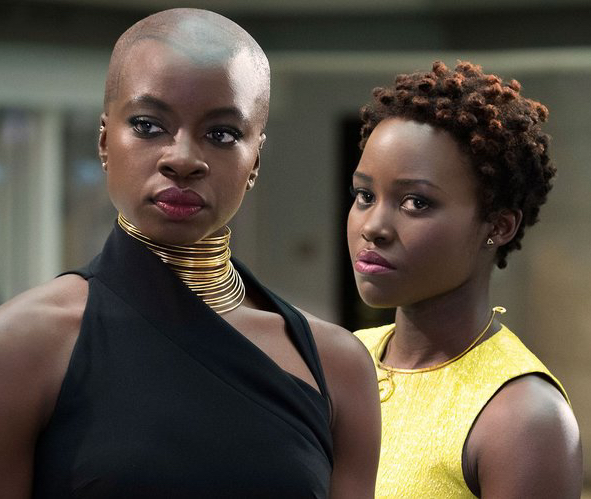
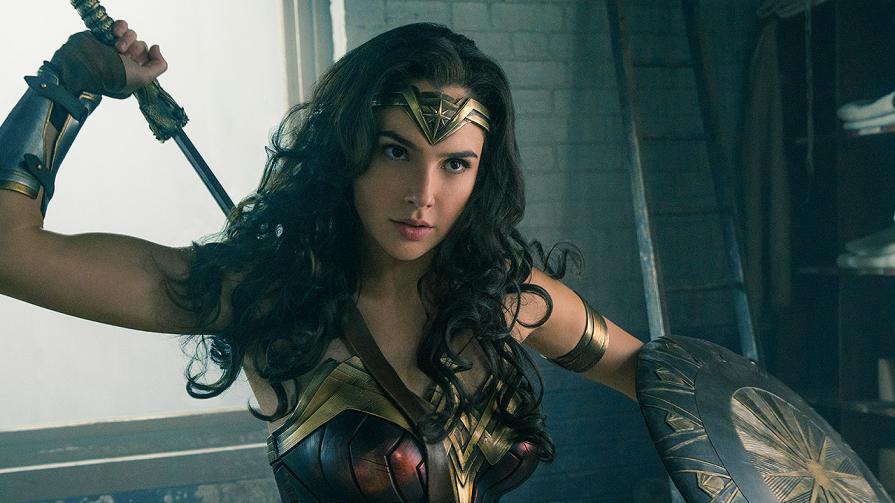

 It’s been years since I was what you’d consider very religious, but the ceremony of lighting Shabbat candles has stayed with me. It’s so important in fact that I chose to write a Larp about it for my contribution to the
It’s been years since I was what you’d consider very religious, but the ceremony of lighting Shabbat candles has stayed with me. It’s so important in fact that I chose to write a Larp about it for my contribution to the 



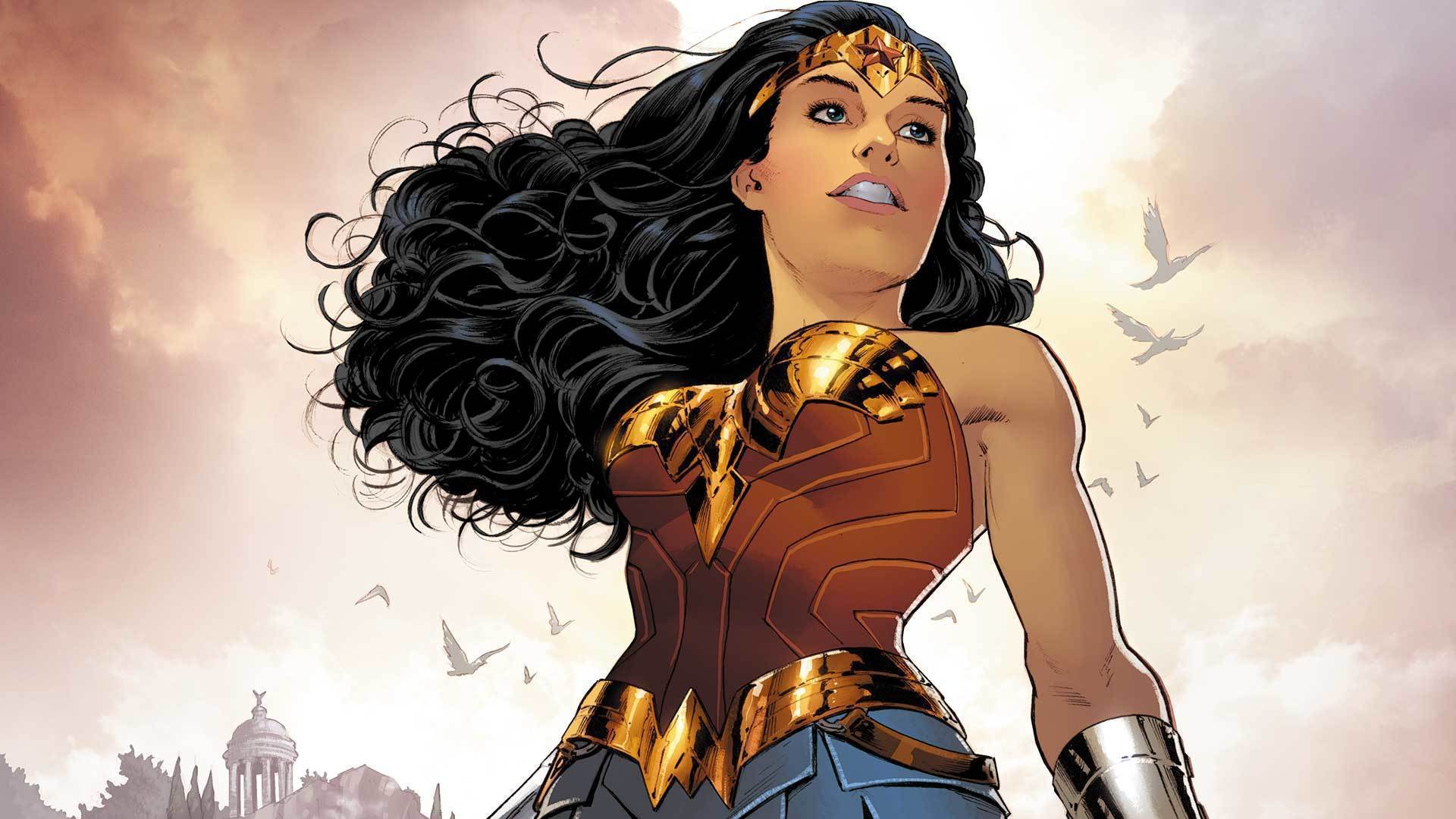




 One of the great parts of the new Wonder Woman movie was the adorable view of Diana as a little girl, galavanting around Paradise Island, ready to become a warrior and outfoxing her tutors in search of adventure. Played by the adorable and fierce Lilly Aspell, the beginning of the film answered one of the burning questions about Wonder Woman: what was it like for the little princess being the only child on Paradise Island, growing up the protected daughter of the Queen? Well, a recent graphic novel finally answered that question.
One of the great parts of the new Wonder Woman movie was the adorable view of Diana as a little girl, galavanting around Paradise Island, ready to become a warrior and outfoxing her tutors in search of adventure. Played by the adorable and fierce Lilly Aspell, the beginning of the film answered one of the burning questions about Wonder Woman: what was it like for the little princess being the only child on Paradise Island, growing up the protected daughter of the Queen? Well, a recent graphic novel finally answered that question.
 Okay, not only does this graphic novel stand as perhaps the definitive stand-alone Wonder Woman story in the history of comics, but it has this kickass cover of Wonder Woman stepping on Batman’s head. The Hiketeia by the unbelievable Greg Rucka stands as a thoughtful, intense Wonder Woman story in which a young woman comes to Wonder Woman for protection after committing a terrible crime. When Wonder Woman extends her assistance, she finds herself in conflict with her long-time ally, Batman. If that sounds interesting, it isn’t even the tip of the iceberg. Greg Rucka captures Wonder Woman’s impossibly complicated morality and compassion in beautiful prose accompanied by fantastic art by veteran comic artist J.G. Jones.
Okay, not only does this graphic novel stand as perhaps the definitive stand-alone Wonder Woman story in the history of comics, but it has this kickass cover of Wonder Woman stepping on Batman’s head. The Hiketeia by the unbelievable Greg Rucka stands as a thoughtful, intense Wonder Woman story in which a young woman comes to Wonder Woman for protection after committing a terrible crime. When Wonder Woman extends her assistance, she finds herself in conflict with her long-time ally, Batman. If that sounds interesting, it isn’t even the tip of the iceberg. Greg Rucka captures Wonder Woman’s impossibly complicated morality and compassion in beautiful prose accompanied by fantastic art by veteran comic artist J.G. Jones. Now that you’re a fan of Wonder Woman, you might want to dive into the ongoing adventures in the comics. But to do that, fans often feel they have to go back and explore all the comics gone by, a legacy that in Wonder Woman’s case spans back 75 years of storytelling. And trust me, not all of it is good. So to make it easier on fans, DC comics recently released a boxed set to commemorate the
Now that you’re a fan of Wonder Woman, you might want to dive into the ongoing adventures in the comics. But to do that, fans often feel they have to go back and explore all the comics gone by, a legacy that in Wonder Woman’s case spans back 75 years of storytelling. And trust me, not all of it is good. So to make it easier on fans, DC comics recently released a boxed set to commemorate the 
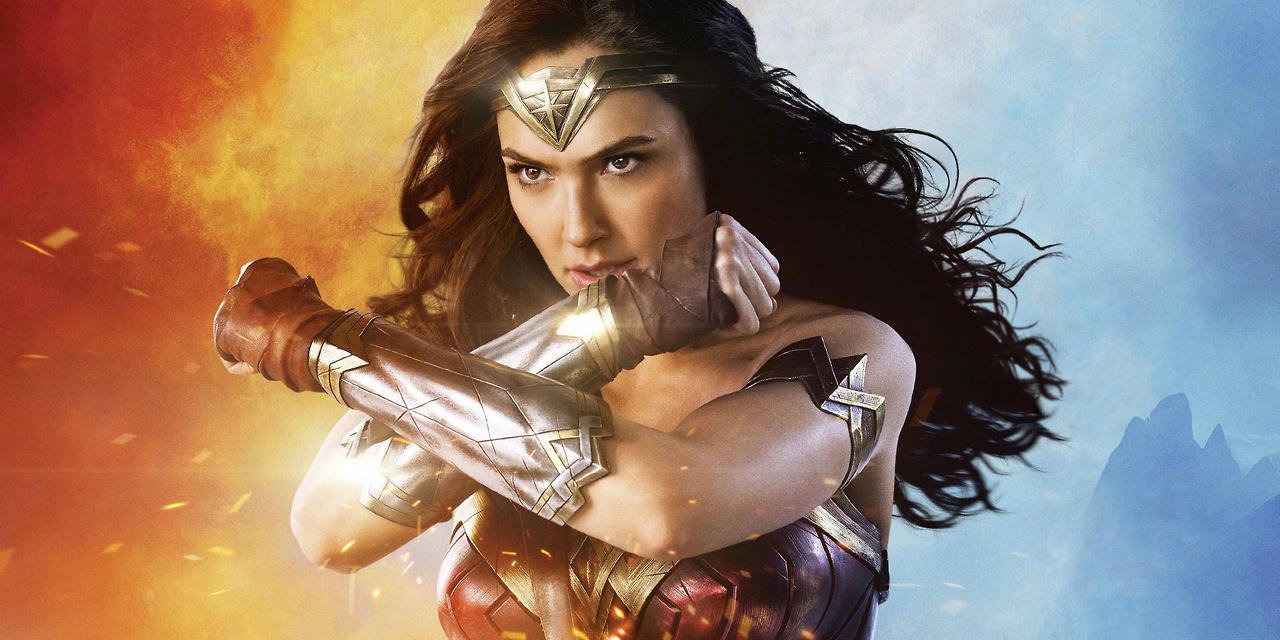



 From the beginning, Wonder Woman truly does its job capturing the origin story of Diana before she picks up the lasso and becomes the warrior who will kick ass in the Justice League. There is nothing more endearing than watching a tiny terror Diana galavanting without fear across the unbearably gorgeous Paradise Island, riding horses and watching the training of the no-holds-barred, thank-you-for-making-them-amazing Amazons. The warriors of Themyscira stride with dignity and grace across the screen, saved from being sexualized and exploited for the male gaze. Instead, the cameras spend time giving them the CGI badass treatment befitting films like 300, as the Amazons show just why they’re exactly the female force to be reckoned with.
From the beginning, Wonder Woman truly does its job capturing the origin story of Diana before she picks up the lasso and becomes the warrior who will kick ass in the Justice League. There is nothing more endearing than watching a tiny terror Diana galavanting without fear across the unbearably gorgeous Paradise Island, riding horses and watching the training of the no-holds-barred, thank-you-for-making-them-amazing Amazons. The warriors of Themyscira stride with dignity and grace across the screen, saved from being sexualized and exploited for the male gaze. Instead, the cameras spend time giving them the CGI badass treatment befitting films like 300, as the Amazons show just why they’re exactly the female force to be reckoned with. For the most part, director Patty Jenkins weaves an incredible heroine’s journey for Princess Diana. Diana and the Amazons discovers war with the arrival of German soldiers on their shores, and with the help of Steve Trevor learn about World War I and the millions dying all across the world. Diana disobeys her mother, steals the lasso of truth and the God Killer sword (one of the most powerful weapons in the DC Universe!) and leaves with Steve to go save the world. She’s naive in thinking she can make everything better just by smiting Ares, who must be behind everything. Here, Gal Gadot plays Diana as the innocent princess, passionately dedicated to her ideals and ready to face down any foe to put her warrior skills to the test. She will save the world no matter what, because she represents the forces of good and right. And of course, she gets a rude awakening.
For the most part, director Patty Jenkins weaves an incredible heroine’s journey for Princess Diana. Diana and the Amazons discovers war with the arrival of German soldiers on their shores, and with the help of Steve Trevor learn about World War I and the millions dying all across the world. Diana disobeys her mother, steals the lasso of truth and the God Killer sword (one of the most powerful weapons in the DC Universe!) and leaves with Steve to go save the world. She’s naive in thinking she can make everything better just by smiting Ares, who must be behind everything. Here, Gal Gadot plays Diana as the innocent princess, passionately dedicated to her ideals and ready to face down any foe to put her warrior skills to the test. She will save the world no matter what, because she represents the forces of good and right. And of course, she gets a rude awakening.



 These errors are compounded by other issues of representation and missed opportunities in the film. An awkward early scene between Diana and Steve skims almost coyly around the question of Amazonian sexuality (“aww shucks, don’t you know about marriage and sexual pleasure and stuff?”) while ignoring the fact that during the death of a beloved Amazon early in the film, one of her fellow warriors clearly races over in what looks like the grief over her dying lover. That lost moment and odd perhaps erasure of queer inclusion in the film is coupled by some stunning backseating of Doctor Poison as a villain in the film. Touted as a terrifying figure, a murderous chemical genius out to kill for the love of it, Doctor Poison is instead relegated to the German general’s frail sidekick. Her sole moment to shine is in a scene during the castle party when she, wait for it, nearly falls for the undercover charms of Steve Trevor.
These errors are compounded by other issues of representation and missed opportunities in the film. An awkward early scene between Diana and Steve skims almost coyly around the question of Amazonian sexuality (“aww shucks, don’t you know about marriage and sexual pleasure and stuff?”) while ignoring the fact that during the death of a beloved Amazon early in the film, one of her fellow warriors clearly races over in what looks like the grief over her dying lover. That lost moment and odd perhaps erasure of queer inclusion in the film is coupled by some stunning backseating of Doctor Poison as a villain in the film. Touted as a terrifying figure, a murderous chemical genius out to kill for the love of it, Doctor Poison is instead relegated to the German general’s frail sidekick. Her sole moment to shine is in a scene during the castle party when she, wait for it, nearly falls for the undercover charms of Steve Trevor. The film also manages to get some wonderful racial and ethnic stereotyping into the movie with Steve’s three buddies in intrigue, Sameer, Charlie, and Chief. Sameer is played as a lying grifter whose heart really lies in the theater. His “very sorry, master!” acting to Pine’s pretend German general as they try to sneak into the castle is almost painful to watch in its stereotypical awfulness. Meanwhile, Charlie (played by the phenomenal Ewen Bremner) has the chance to be a poignant character as a crack sniper dealing with issues of PTSD. He might have gotten there however if he wasn’t buried in the trope of the Drunken Scotsman so hard its almost shocking. And then there’s Chief, the Native American smuggler who manages to magically show Diana where the bad guy is going by sending up smoke signals. No joke there. For serious.
The film also manages to get some wonderful racial and ethnic stereotyping into the movie with Steve’s three buddies in intrigue, Sameer, Charlie, and Chief. Sameer is played as a lying grifter whose heart really lies in the theater. His “very sorry, master!” acting to Pine’s pretend German general as they try to sneak into the castle is almost painful to watch in its stereotypical awfulness. Meanwhile, Charlie (played by the phenomenal Ewen Bremner) has the chance to be a poignant character as a crack sniper dealing with issues of PTSD. He might have gotten there however if he wasn’t buried in the trope of the Drunken Scotsman so hard its almost shocking. And then there’s Chief, the Native American smuggler who manages to magically show Diana where the bad guy is going by sending up smoke signals. No joke there. For serious. And yet she was too perfect for the movie she was in. She was too perfect for a movie that wouldn’t trust her to just be herself, to stand strong and make her own decisions without being led by the nose by a male counterpart. Though the character might be young and on the beginning of her journey, there was a great difference between showing inexperience in the character of Diana and providing the movie with tons of moments of bad patriarchal behavior that are barely ever addressed or confronted. By the end it was quite clear the movie had lost the complexity of Diana in favor of tropes better recognizable to a general movie audience: the star-crossed wartime lovers, the lost and enraged hero saved by the power of love. And while it might be revolutionary for some that the genders of these tropes have been flipped so the hero has become the Wonder heroine, as a fan of the character for two and a half decades, I am not that easily impressed. I expect more.
And yet she was too perfect for the movie she was in. She was too perfect for a movie that wouldn’t trust her to just be herself, to stand strong and make her own decisions without being led by the nose by a male counterpart. Though the character might be young and on the beginning of her journey, there was a great difference between showing inexperience in the character of Diana and providing the movie with tons of moments of bad patriarchal behavior that are barely ever addressed or confronted. By the end it was quite clear the movie had lost the complexity of Diana in favor of tropes better recognizable to a general movie audience: the star-crossed wartime lovers, the lost and enraged hero saved by the power of love. And while it might be revolutionary for some that the genders of these tropes have been flipped so the hero has become the Wonder heroine, as a fan of the character for two and a half decades, I am not that easily impressed. I expect more.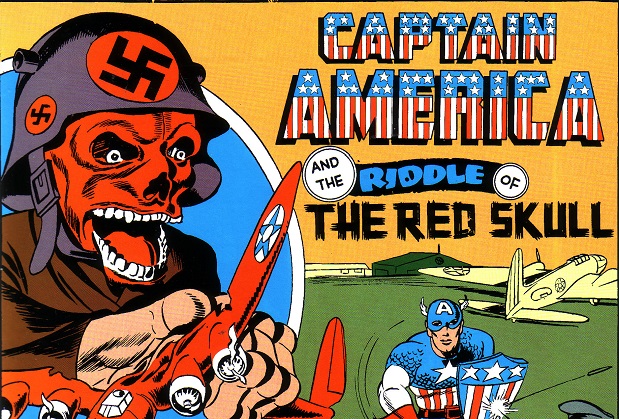
 So apparently, Captain America is a HYDRA agent now. And everyone seems intent on telling me how I should or shouldn’t feel about it.
So apparently, Captain America is a HYDRA agent now. And everyone seems intent on telling me how I should or shouldn’t feel about it.

 There’s been quite a lot of articles about how this is a desecration of everything that Captain America stands for.
There’s been quite a lot of articles about how this is a desecration of everything that Captain America stands for. 





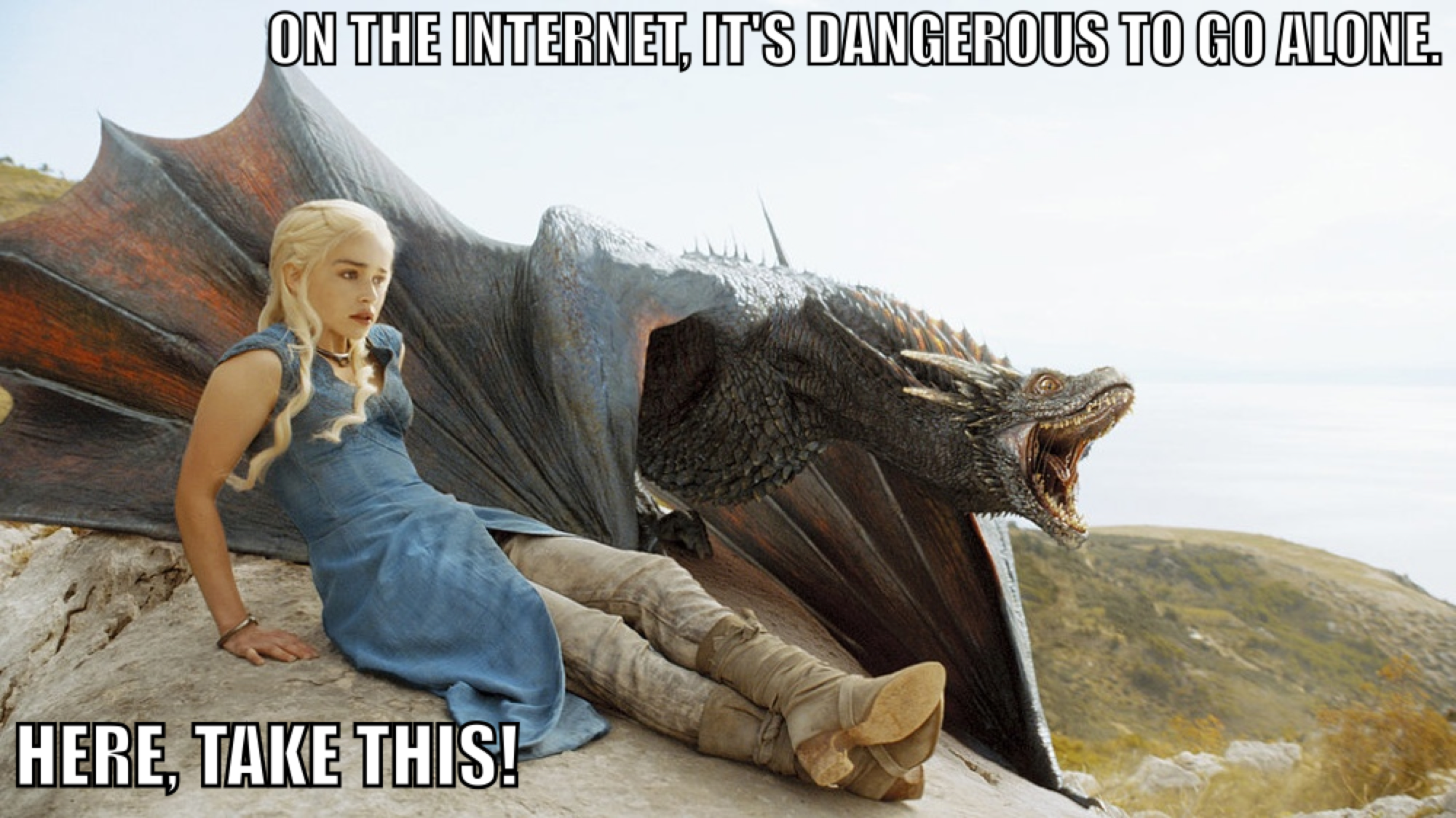







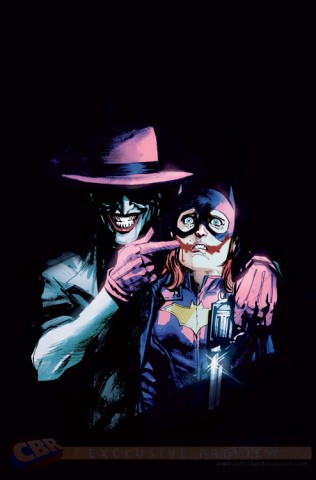
 (Warning: discussion of fictional sexual violence ahead.)
(Warning: discussion of fictional sexual violence ahead.)